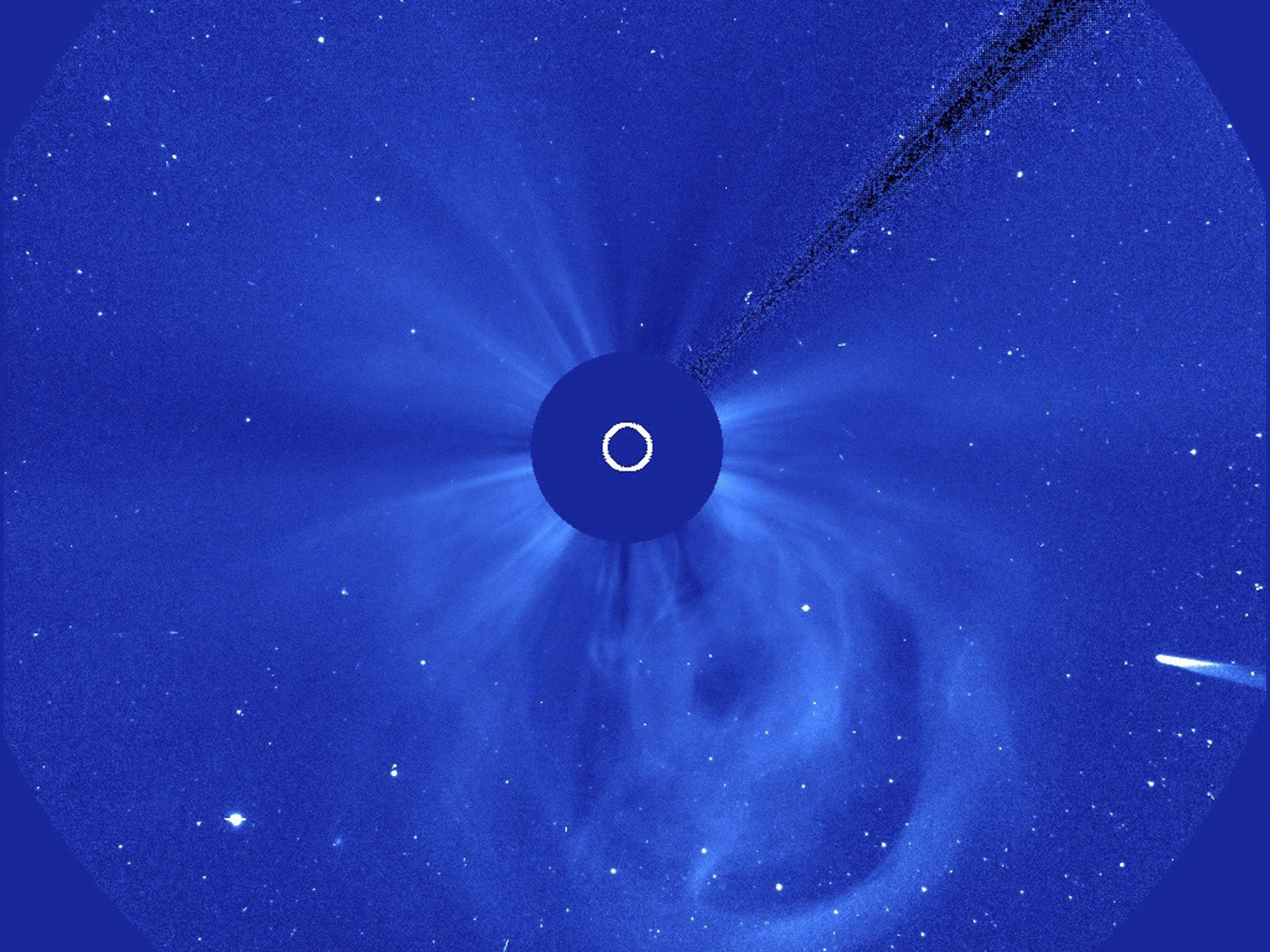Comet Ison: Blow for stargazers as 'comet of the century' destroyed by the Sun
It was hoped that the comet would provide a spectacular sight in the sky next month - but the signs indicate that it had been burned up on its journey

Your support helps us to tell the story
From reproductive rights to climate change to Big Tech, The Independent is on the ground when the story is developing. Whether it's investigating the financials of Elon Musk's pro-Trump PAC or producing our latest documentary, 'The A Word', which shines a light on the American women fighting for reproductive rights, we know how important it is to parse out the facts from the messaging.
At such a critical moment in US history, we need reporters on the ground. Your donation allows us to keep sending journalists to speak to both sides of the story.
The Independent is trusted by Americans across the entire political spectrum. And unlike many other quality news outlets, we choose not to lock Americans out of our reporting and analysis with paywalls. We believe quality journalism should be available to everyone, paid for by those who can afford it.
Your support makes all the difference.Astronomers tracking the “comet of the century” tonight believed it had flown too close to the Sun and had broken up. Comet Ison was due to pass within 730,000 miles of the sun’s surface shortly after 6.30pm.
“We don’t think it survived because we don’t see any new dust,” Nasa’s Solar Dynamics Laboratory said.
It was hoped that Comet Ison would provide a spectacular sight in the sky next month - but the signs were that it had been burned up on its journey.
The comet was due to graze the outer layers of the sun at 6.37pm UK time tonight, approaching as close as 730,000 miles (1,174, 821km) from the star's surface.
As it brushed past the Sun, the comet would encounter temperatures of more than 2,700C (4,892F), enough to vaporise rock.
If enough of it survived, it promised to be one of the brightest seen this century, but its fate would be decided by its size. At around 1.2 miles (2km) across, it was thought it could be just big enough to avoid being melted away or turned to dust.
Even at a greatly reduced size it was hoped it could produce a glorious long tail, visible to the naked eye from the UK from December 1 onwards.
Images from Nasa spacecraft showed the comet approaching for its slingshot around the Sun today - but nothing coming out on the other side.
US Navy solar researcher Karl Battams said: "Ison probably hasn't survived this journey."
Phil Plait, an astronomer who runs the Bad Astronomy blog, agreed, saying: "I don't think the comet made it."
However he said it would not be all bad news if the rock broke into pieces, because astronomers might be able to study them and learn more about comets.
Join our commenting forum
Join thought-provoking conversations, follow other Independent readers and see their replies
Comments